Cruiser
Chumono
The Washington Department of Natural Resources sets up and auctions timber sales on state land to fund schools and other public institutions.
One of the requirements for laying out a sale is that a minimum of 8 trees/acre remain uncut. They can be scattered individuals or lumped together. The preference is for long-lived structurally unique trees.
These leave trees are in addition to old growth, unstable geological features, ecologically rare/sensitive areas, and streams that also get bound out or buffered.
When one looks out into a clear cut and sees discreet islands of trees remaining, leave tree areas (LTAs) are usually what they’re viewing.
Here’s my take.
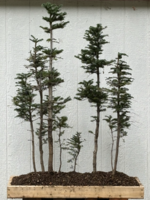
The real thing.
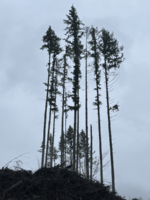
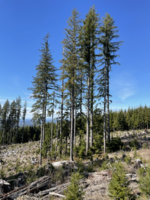
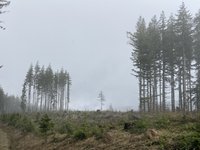
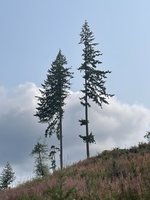
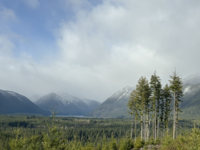
Individual leave trees get a blue band so loggers know not to cut them.
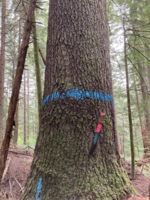
Clumped leave trees get tagged and ribboned.
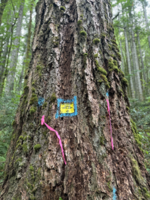
Here is a stream buffer. You can see that interior trees are shorter hardwoods. Those are red alder growing right along the channel. The conifers are Douglas-fir and western hemlock. Most buffers are at least 100’ on both sides of a stream.

One of the requirements for laying out a sale is that a minimum of 8 trees/acre remain uncut. They can be scattered individuals or lumped together. The preference is for long-lived structurally unique trees.
These leave trees are in addition to old growth, unstable geological features, ecologically rare/sensitive areas, and streams that also get bound out or buffered.
When one looks out into a clear cut and sees discreet islands of trees remaining, leave tree areas (LTAs) are usually what they’re viewing.
Here’s my take.

The real thing.





Individual leave trees get a blue band so loggers know not to cut them.

Clumped leave trees get tagged and ribboned.

Here is a stream buffer. You can see that interior trees are shorter hardwoods. Those are red alder growing right along the channel. The conifers are Douglas-fir and western hemlock. Most buffers are at least 100’ on both sides of a stream.

